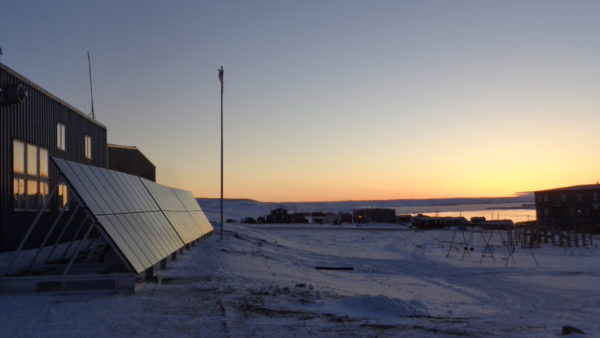Solar is slowly but surely making its way further from the equator.
While technological improvements and increased acceptance have driven solar’s push into colder climes, plenty of challenges remain to operating a PV system in such environments. Not least among them is dealing with snowfall: keeping panels clear and able to absorb sunlight, ensuring the weight of snowfall doesn’t cause permanent damage and many other issues.
With snowy regions new ground for solar, little data is available to help system operators make decisions. To attempt to remedy that, nuclear weapons business Sandia National Laboratories has begun its Snow as a Factor in Photovoltaic Performance and Reliability project to quantify the effects of snow on PV systems, conducting field research at four U.S. sites.
Subscribe
 Image: Green Sun Rising[/caption]
Image: Green Sun Rising[/caption]The February 2020 edition of pv magazine takes an in-depth at PV’s growth in northern latitudes, in Europe’s Nordic nations and in the remote settlements of the Canadian Arctic. Click here to subscribe
Challenge and opportunity
A paper written as part of the project notes that thanks to very high albedo, snow presents an opportunity as well as a challenge to solar, particularly in systems featuring bifacial modules. That paper, Performance of Bifacial Photovoltaic Modules on a Dual-Axis Tracker in a High-Latitude, High-Albedo Environment, published in the Proceedings of the IEEE PVSC-46 Conference, examines two years of performance data from experimental systems featuring bifacial modules on dual-axis trackers in Vermont.
The data show bifacial modules produced 14% more energy than single-sided ones, on top of an estimated 35-40% boost provided by the dual-axis. During peak winter months, bifacial modules performed as much as 40% better than single-sided panels. The results also showed a 41% increase in energy yield for bifacial-plus-dual-axis tracker units, compared to bifacial fixed-tilt alternatives.
The study also suggests a significant yield gain from dual-axis tracking thanks to the sun’s low angle in northern latitudes. The trackers, however, are thought too expensive in most settings and the analysis did not take into account economic factors.
The study also found low temperatures in the region increased system operating efficiency. Slightly increased temperature – thanks to rear-side irradiance and the high tilt angle and use of frameless modules – assisted with snow shedding.
“Our work suggests there is an under-recognized opportunity to deploy bifacial dual-axis tracking systems in regions of the world that see abundant snow in winter and are also experiencing significant growth in PV capacity,” concluded the paper. “It is also noteworthy that snow-covered terrain – unlike artificial substrates – adds no additional cost to a project and is constantly refreshed throughout the winter, thus retaining a high albedo for five to six months a year.”
This content is protected by copyright and may not be reused. If you want to cooperate with us and would like to reuse some of our content, please contact: editors@pv-magazine.com.



2 comments
By submitting this form you agree to pv magazine using your data for the purposes of publishing your comment.
Your personal data will only be disclosed or otherwise transmitted to third parties for the purposes of spam filtering or if this is necessary for technical maintenance of the website. Any other transfer to third parties will not take place unless this is justified on the basis of applicable data protection regulations or if pv magazine is legally obliged to do so.
You may revoke this consent at any time with effect for the future, in which case your personal data will be deleted immediately. Otherwise, your data will be deleted if pv magazine has processed your request or the purpose of data storage is fulfilled.
Further information on data privacy can be found in our Data Protection Policy.